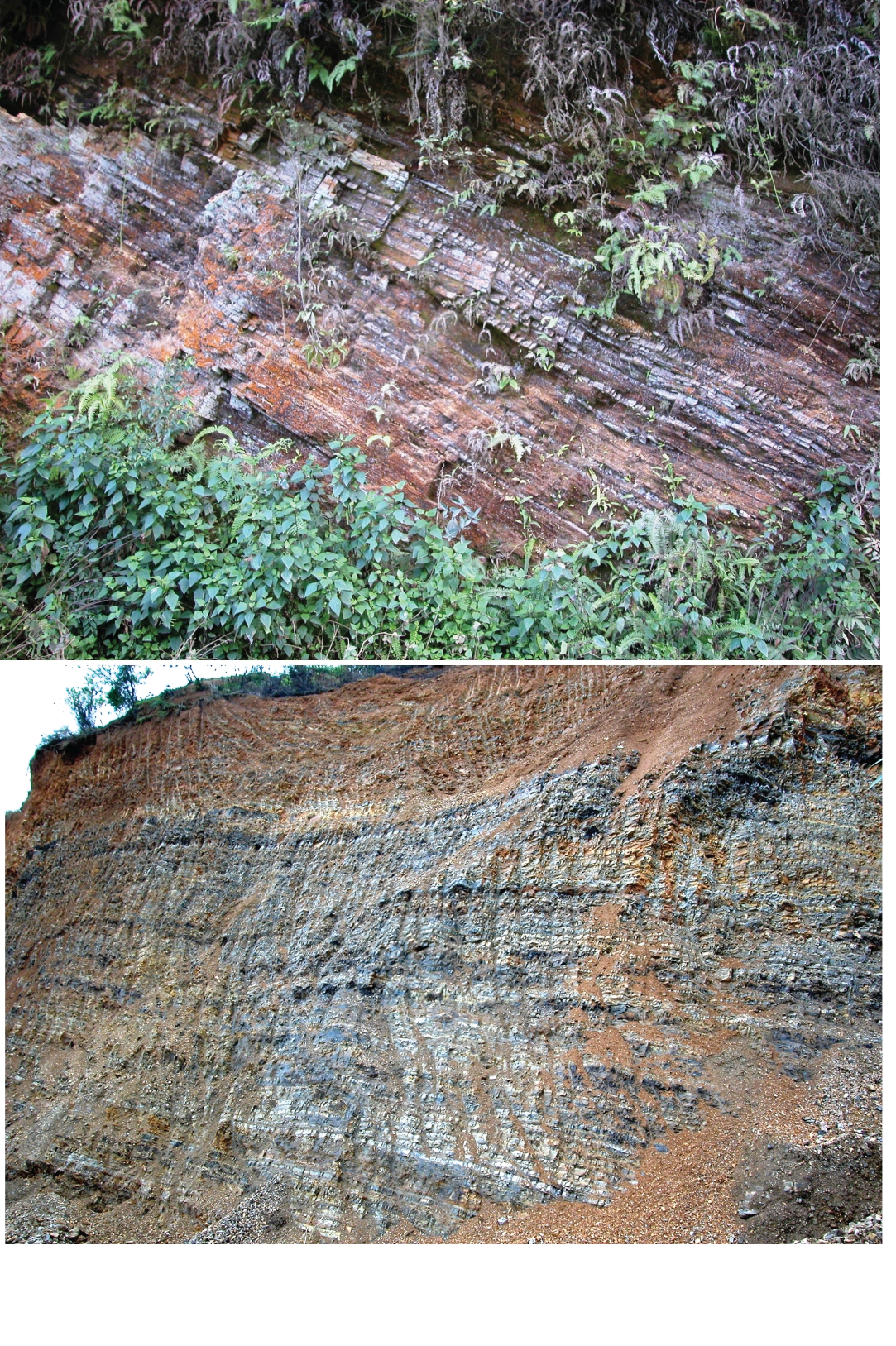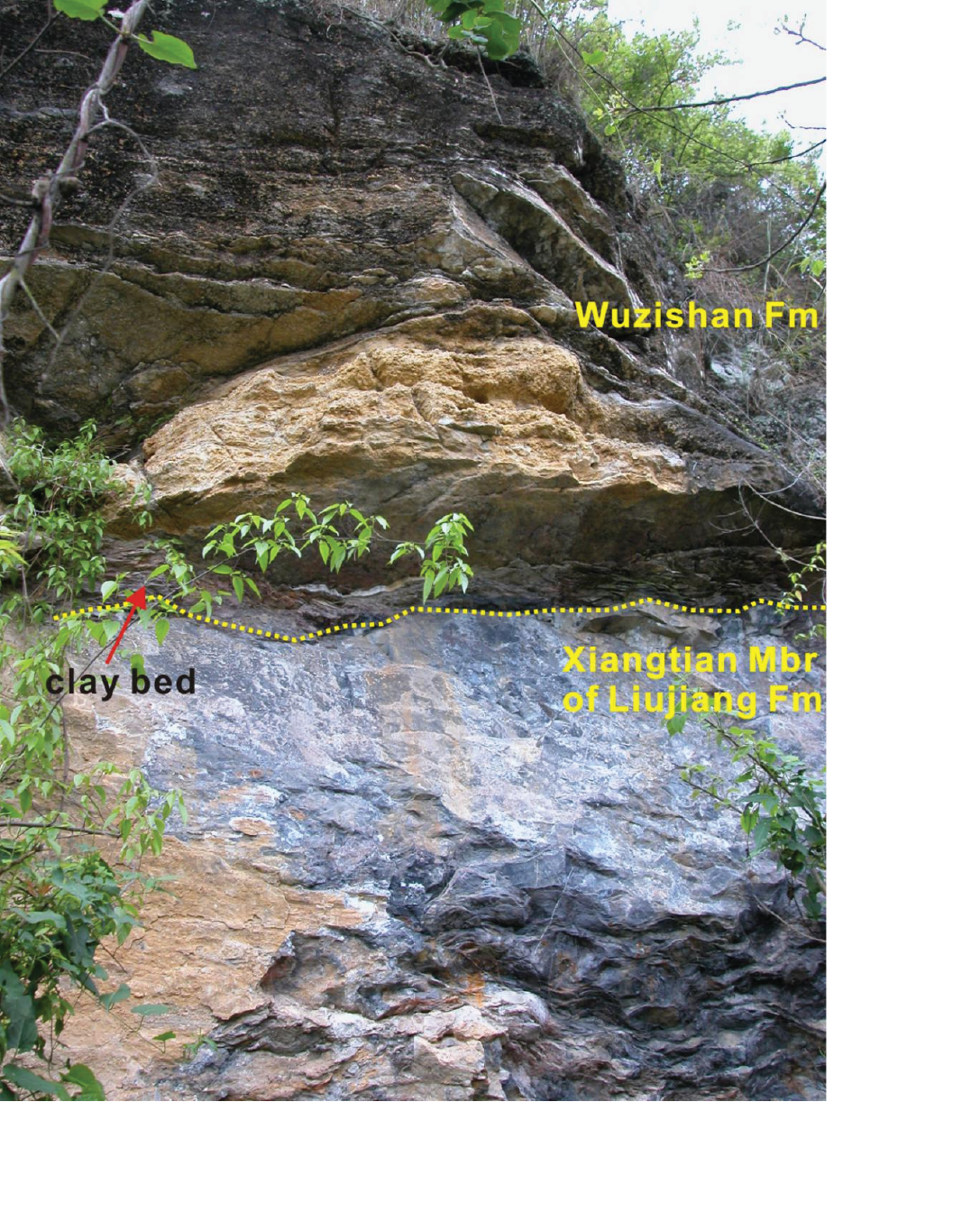Liujiang Fm
Type Locality and Naming
The type section is located nearby Zhaisha Township (Liujiang County in old name) of Luzhai County, Guangxi. It was named by Feng Jinglan in 1929. Due to the city construction, the section has not been protected. A lectostratotype section is selected by San Y. (1982, unpublished, see Wu Y. et al., 1992) from Luofu of Nandan, northwestern Guangxi (see Figure).
Lithology and Thickness
Chert. It is dominated by grayish-black to brown thin-bedded chert, siliceous mudstone with horizontal bedding and contains manganese and phosphorites. In the upper parts a few thin bedded argillaceous limestone occur. Small folds and joints are well developed in the formation, and the rocks become fragile after weathering. Volcanic tuffs have been reported from few sections in Nandan, Baisha of Guangxi. It reaches a thickness of approximately 200 m.
[Figure - Thin-bedded siliceous rocks (chert) of Liujiang Formation in the entrance of G355 Highway of Xiangzhou County, Guangxi (lower) and 1.5 km south of Gedang village, Funing County, Yunnan (upper).]
Relationships and Distribution
Lower contact
At base of the formation, in eastern Guangxi, it is easily separated at its conformable contact to the underlying shallow-carbonate Donggangling Fm (Tungkangling Fm) by the appearance of siliceous rocks. In western Guangxi, this facies has a conformable contact with the deep-marine shales of Luofu Fm. In Xiangzhou (column 65/25), it overlies shallow-water carbonates of Baqi Fm.
Upper contact
It is conformably overlain by the nodular limestone of Wuzhishan Fm at base of Famennian.
Regional extent
This formation is widely distributed over Guangxi southeastern Yunnan, southern Guizhou and Hunan. The lithology is relatively homogeneous, but thickness varies with a maximum thickness of 400 m. The same equivalent siliceous deposits bearing-Nowakia otomari were named as Fenshiling Fm and Mudi Fm in southeastern Yunnan.
GeoJSON
Fossils
It contains abundant tentaculites which often gather closely as horizontal bands; the main tentaculites are Homoctenus tenuicinctus, Striatostyliolina striata, Nowakia nandanensis; Styliolina sp., Metastyliolina sp. Ostracods Entomoprimitia spiendens, Entomozoe pseudorichterina, Bertillonella reichi, Maternella hemisphaerica. Ammonoids Manticoceras sp., Mesobeloceras sp.
Age
Depositional setting
It is interpreted as a typical basin facies deposit formed during the maximum sea level transgression of Devonian.
Additional Information
The Liujiang Fm includes important beds of manganese and phosphorite ores in Nandan-Hechi area of Guangxi. In south Guangxi at Tianlin, Baise, Daxing and Guiping, some volcanic lava and basalt are recorded.
Rb-Sr and U–Pb dating was reported by Huang and Du (2009) from a strata-bound tin ore in the Liujiang Formation of Dachang with an age of 377.89 ± 8.9 Ma.

